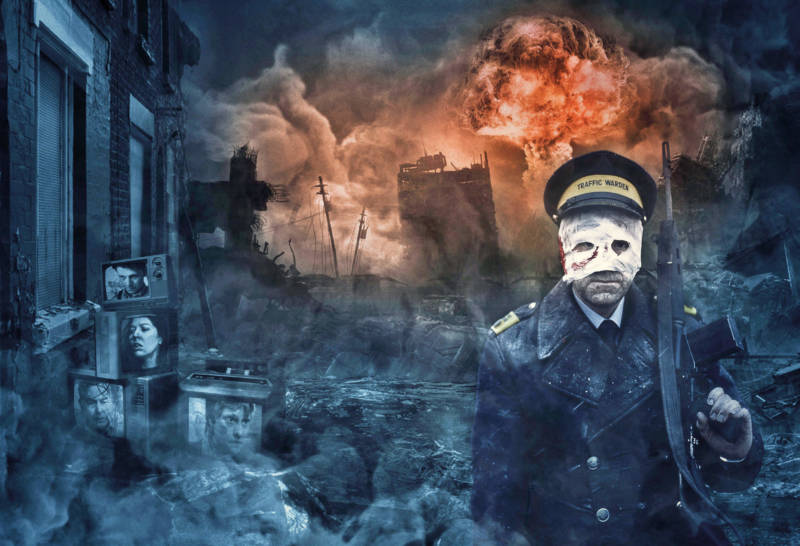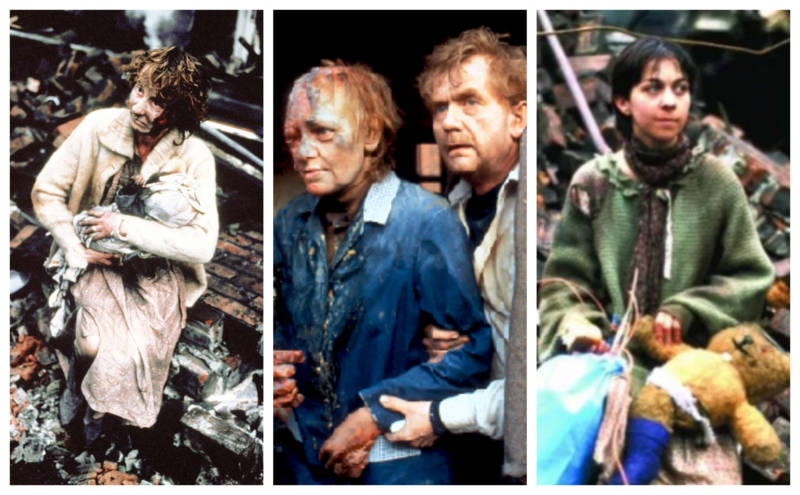Thirty-five years ago this week, the BBC aired Threads, one of the most searing movies about nuclear war in TV history. The following year, the docu-drama aired on TBS and became, at the time, the most watched basic cable show in America. Today it can be found on dedicated horror streaming channel, Shudder. But back in 1984? It was recorded by teachers across the U.K. and shown to an entire generation of schoolchildren.
How One Apocalyptic BBC Movie Scarred a Generation of U.K. Schoolchildren

Threads starts by juxtaposing the mundane everyday activities of two normal English families with calamitous events playing out on the world stage. The film uses a worst case scenario (Soviet Union invades Iran, America retaliates, England gets caught in the crossfire) alongside the bleakest of visuals, to emphasize just how little power the average person has over their own fate. Both protest and prayer are depicted as utterly useless.
While it’s understandable that a film in which two-thirds of Britain is destroyed by nuclear bombs would be deemed school-worthy—especially during the Cold War—the imagery in Threads was extraordinarily visceral. At the moment of the country’s destruction, for example, the film shows bodies burning (including a baby), rubble landing on people’s heads, humans crawling through fire, buildings falling, charred hands, a cat dying, an elderly woman soiling herself and a man violently vomiting.
Lest any viewers miss the point of the horrors unfolding, there is a sporadic, authoritative BBC voiceover to move things along. “An explosion… has sucked up this debris and made it radioactive,” it says in the bomb’s immediate aftermath. “The wind has blown it here. This level of attack has broken most of the windows in Britain. Many roofs are open to the sky; some where the lethal dust gets in. In these early stages, the symptoms of radiation sickness and the symptoms of panic are identical.”
Following that is a full hour of slow, harrowing deaths, interspersed with civilians being teargassed for wanting supplies, finally culminating in post-apocalyptic nuclear winter, the spread of disease, and a heavy veil of abject, filthy hopelessness. The film ends with a teenage girl having a stillbirth after being raped.
Mad Max and The Road ain’t got nothin’ on the second hour of this thing.

That Threads was deemed appropriate viewing for young schoolchildren is unfathomable for a lot of the adults who were forced to watch it the first time around. “I was 13 and I believe the school showed it to us in a Religious Studies lesson,” British father-of-two, Chris West says. “I remember the immediate fear of how real it all looked. Most of the stuff I had seen up until then had been a steady diet of Star Wars and Superman, so the gritty British camerawork and acting had a real impact. From that night on, I had night terrors—the most hideous and real nightmares—for years. Sirens I heard in even the daytime would make me stop dead in my tracks.”
Like West, Will Jones, 44, had recurring nightmares for a decade after being shown Threads in English class 30 years ago. “It was terrifying because it was so believable,” he says. “I remember talking about it extensively with friends and hoping it would never happen, but believing it would. I’m not sure it’s fair for teenagers to have this dumped on them.”
Threads was not the first time children were subjected to adult horrors in the course of their school day. In the ’50s and ’60s, there were atomic duck and cover videos and drills.
Today, of course, children of all ages in almost all American public schools suffer through active shooter drills on a regular basis—and it’s not without consequence. According to the New York Times, “Psychologists and many educators say frequent, realistic drills contribute to anxiety and depression in children,” and that “nearly 60 percent of American teenagers said they were very or somewhat worried about a mass shooting at school.”
Where Threads distinguished itself though, is in the fact that it offered no instruction or advice whatsoever. In fact, the film quite emphatically told viewers there was absolutely nothing they could do to stay safe in the event of a nuclear explosion. The best they could hope for was instant death.
Threads was not specifically made for a young audience, nor was it the BBC’s intention for it turn into an educational video for school-aged children. Still, it remains an example of how kids can get caught up in the proverbial crossfire when adults aren’t doing the right thing—something this month’s climate change protesters can surely relate to.
Fortunately for those who saw Threads in the ’80s, the end of the Cold War, plus time, has enabled some of those once-terrified children to develop a sense of humor about it all. And, in 1984, this surely felt impossible…

